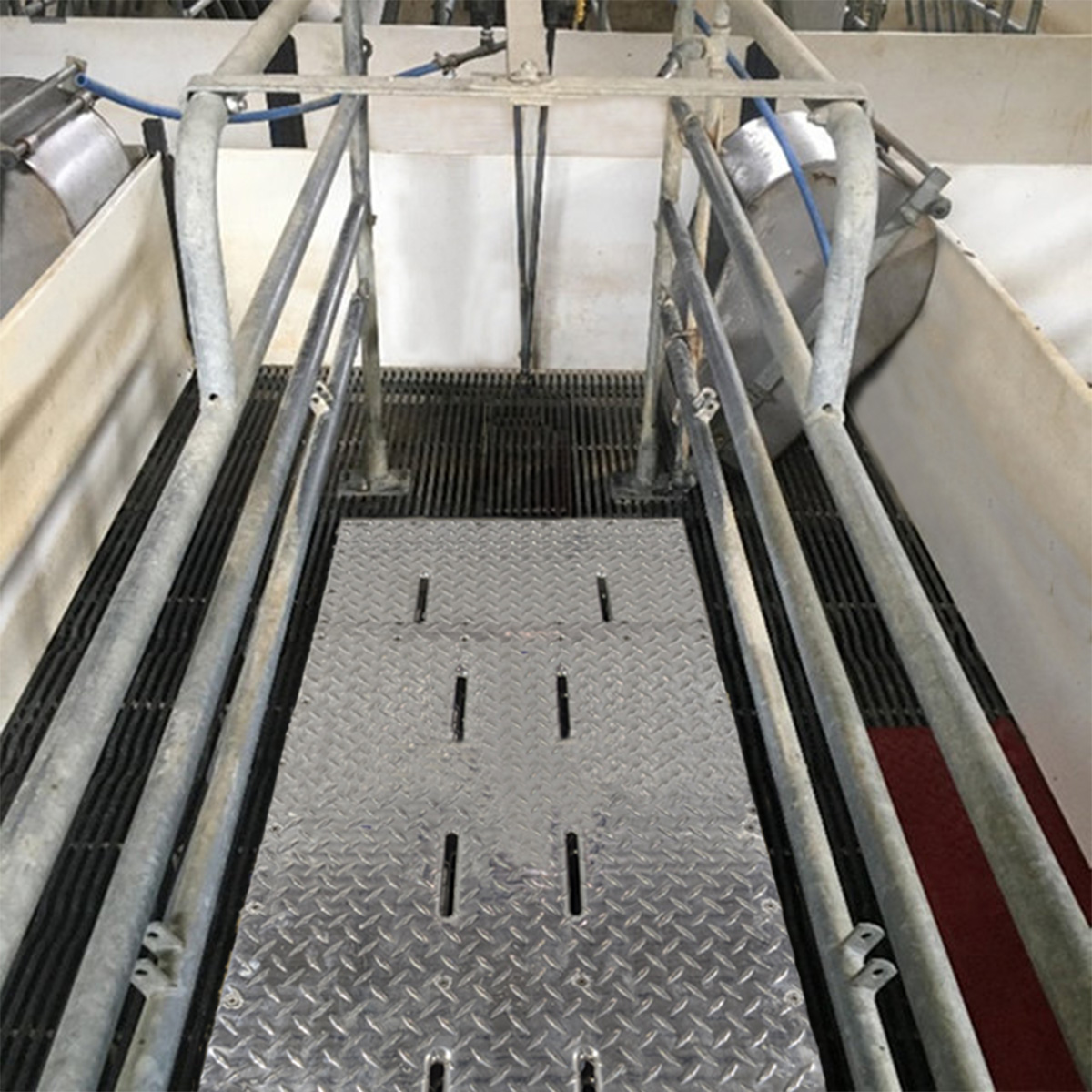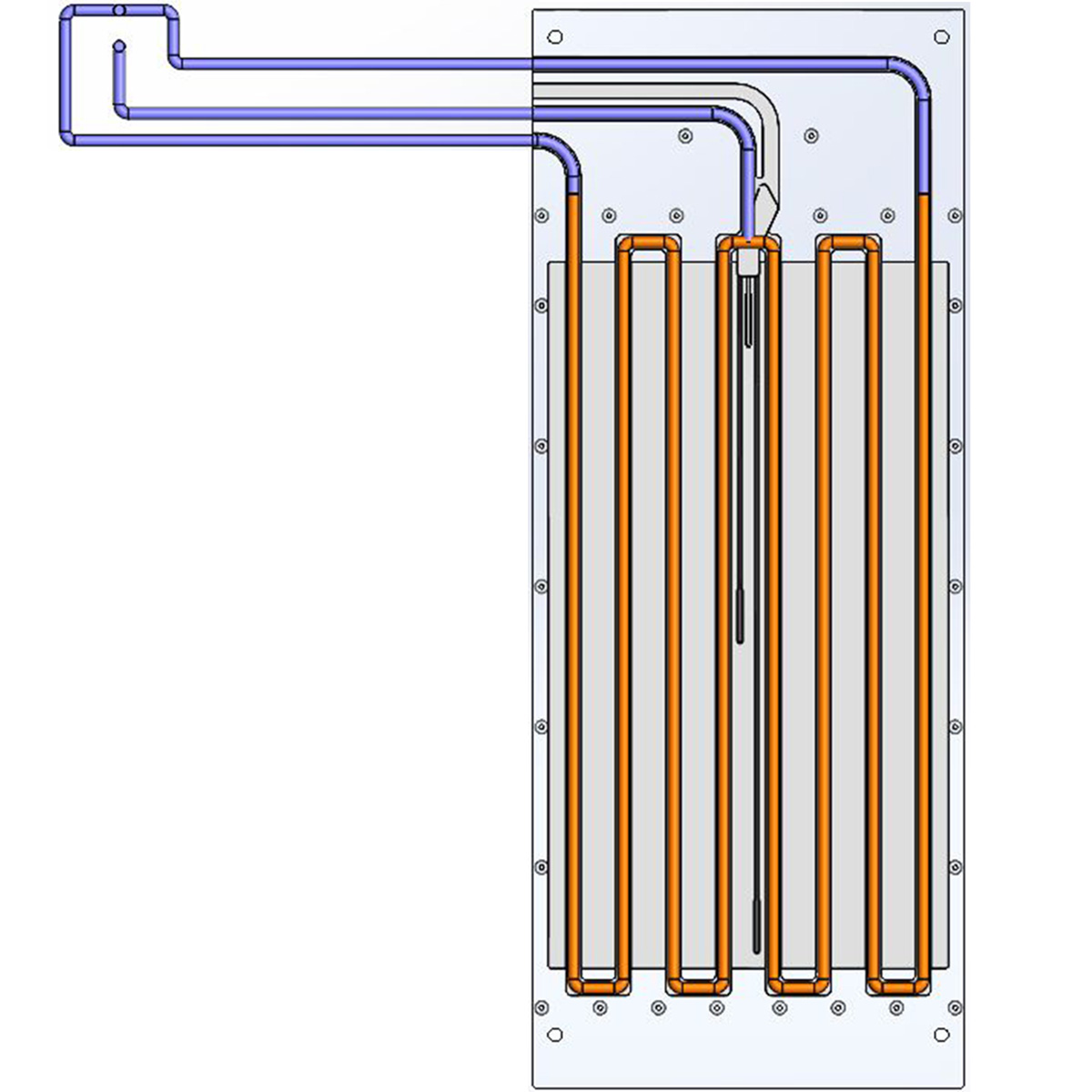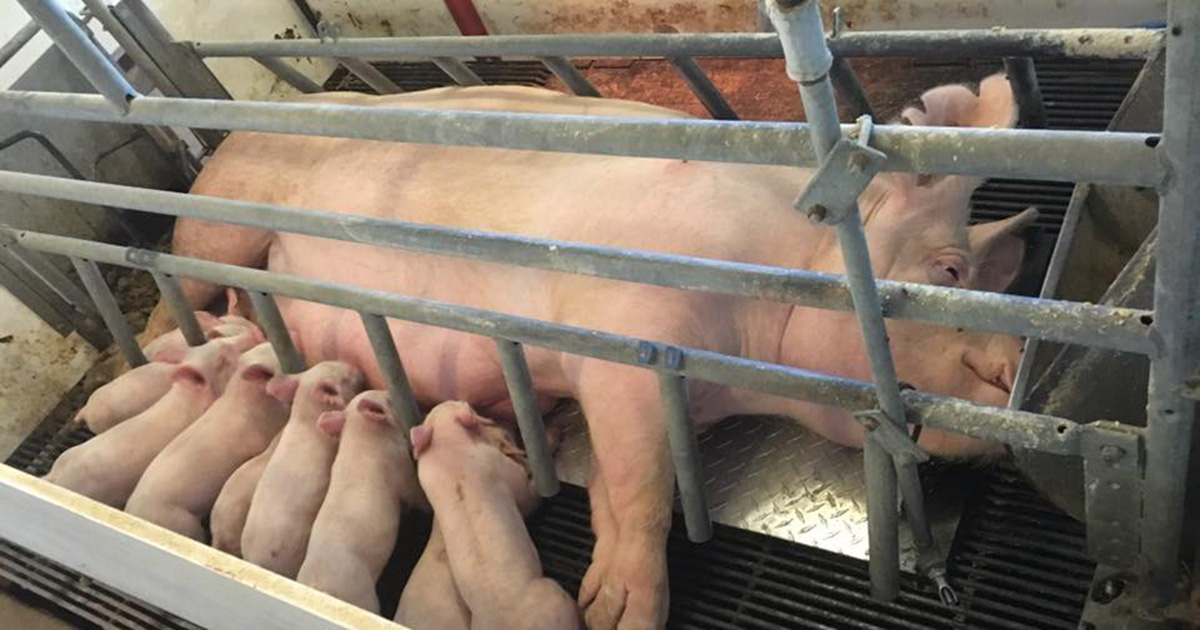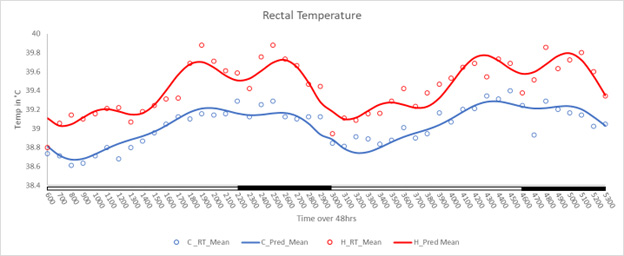Cooling pads to reduce heat stress in sows and boars
Purpose of Research
Heat stress has a major economic impact on the pork industry. Modern lactating sows produce over 50% more heat than sows of the late 1980's and are more sensitive to high environmental temperatures. Heat reduces both male and female fertility in swine. Our objective was to evaluate the use of cooling pads in late gestation and lactating sows and in mature boars and to better understand the impact of high environmental temperatures on the animals.


Results
The cooling pads drastically reduce any indication of heat stress even at room temperatures at 90 to 95 degrees F. The sows on the cooling pads have increased feed intake, increased litter weaning weights and reduced lactation body weight loss. The sows on the cooling pads have approximately a 21 percent increase in heat production. The sows on the cooling pads have differently daily eating patterns, with much greater feed intake than the control sows from 4 to 6 PM. The control sows , under natural heat stress ( summer day with peak temperature of 90 F ) have delayed evening meal feed intake ( 930 to 1030 PM ). The late evening activity and feed intake causes an increase in body temperatures in the control sows from 11 PM to 1 AM. The control sows on warmer summer days have two peaks in body temperatures the first at about 11 am and the second at 11:30 PM.

Conclusions
The cooling pads should be considered in areas that are exposed to high environmental temperatures in the summer months. The next steps are to refine the cooling pad water controls and flushing systems for larger number of sows and boars.

Contact information
Dr. Allan Schinckel aschink@purdue.edu | Google Scholar